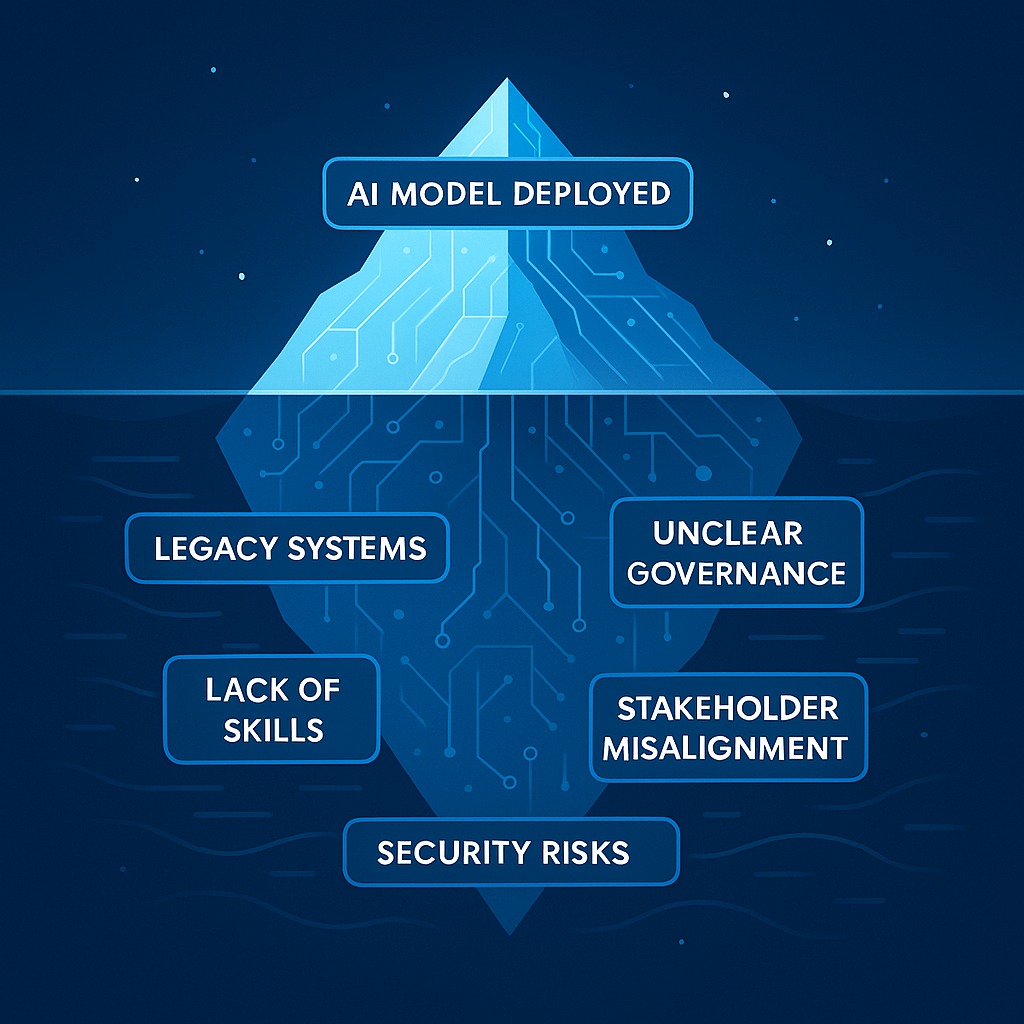If you’ve ever been on the inside of an AI or automation project at a large company, you know the feeling: the tech works, the idea is solid, but somehow… everything gets stuck.
It’s not that enterprises aren’t interested in automation or AI. It’s that the moment you try to do something — even something simple — the tangled mess of real-world business gets in the way.
Let’s talk about why this is so hard, what all the roadblocks really are (spoiler: it’s not just compliance), and how teams can cut through the noise without setting themselves up for failure.
Why AI Projects in the Enterprise Are So Challenging
Here’s the reality: the barriers to automation and AI adoption are rarely technical. They’re organizational, operational, and deeply human.
Some of the most common (and very real) hurdles:
- ROI Requirements: Can’t get buy-in unless you show the return. But to do that, you first have to estimate the current cost of manual labor. That means time tracking, output measurement, and internal benchmarking most orgs don’t have ready.
- Budget Politics: Who’s paying for this? Who owns it? What budget line does it fall under? These are deal-breaker questions in many orgs.
- Security Reviews: Every tool, every API call, every data connection goes through weeks (or months) of security evaluation.
- Compliance & Regulatory Constraints: Especially in finance, healthcare, or global orgs. What you can do legally vs. what your AI could do are two different things.
- Data Privacy & Ownership: Where does the data live? Who owns it? Are we allowed to train a model on it? Is it even clean or labeled?
- Impact on Jobs: Introducing automation often raises concerns about role reductions. HR and change management need to get involved early.
- Integration Nightmares: Your cool new AI tool? It has to connect with 5 legacy systems, 3 clouds, and a few spreadsheets that somehow still run the business.
- Post-Go-Live Maintenance: Once it’s live, someone has to monitor accuracy, tune prompts, retrain models, support users, and fix bugs.
- Training Requirements: End users need onboarding. Support teams need docs. Everyone needs to understand what AI is doing and why.
- AI Bias and Explainability: Who’s accountable when the AI gets it wrong? Is it fair? Can we audit it?
- Governance Frameworks: Who reviews use cases? What’s the escalation path? Is there even a defined intake process?
- Vendor Procurement Loops: Want to try a SaaS AI tool? Be prepared for a 6-month vendor onboarding and legal negotiation cycle.
These Aren’t New Problems — But AI Adds New Complexity
A lot of these hurdles existed with traditional software projects. But AI adds a layer of unpredictability, ambiguity, and speed that makes them harder to manage:
- AI decisions aren’t always explainable
- Models degrade without ongoing tuning
- Data drift, hallucinations, and biases are harder to catch
- Expectations are sky-high, thanks to hype
So what can you do? How do you move forward without getting buried in process?
How to Cut Through the Complexity (Without Cutting Corners)
Here are a few ways to make AI adoption more manageable:
- Start with ROI-driven Pilots: Pick use cases where cost savings are easy to measure — like time spent on manual reporting or customer support triage.
- Create a Lightweight Governance Team: Don’t wait for a full AI committee. Assemble 3–5 cross-functional leads to review and approve pilots quickly.
- Use Privacy-Respecting, Open-Source Models: When you can run models internally or on your cloud, you skip a huge chunk of security/legal review cycles.
- Focus on Augmentation, Not Automation: Frame AI as a co-pilot, not a replacement. This reduces fear, eases adoption, and aligns better with reality.
- Build Feedback Loops from Day One: Plan for human review, performance monitoring, and model tuning from the start — not as an afterthought.
- Communicate Clearly, Constantly: Don’t just launch. Explain the why, the how, and the expected outcome. Over-communication builds trust.
- Document Everything Simply: No one reads 40-page decks. Build living docs, FAQs, and prompt libraries people will actually use.
The Tech Is the Easy Part
Getting AI to work isn’t the hard part. Navigating your organization is.
But if you know what you’re up against, you can design smarter pilots, win early support, and build systems that actually scale — without drowning in complexity.
AI adoption in the enterprise is a marathon. Don’t sprint. Start small, stay sharp, and move forward with intention.
